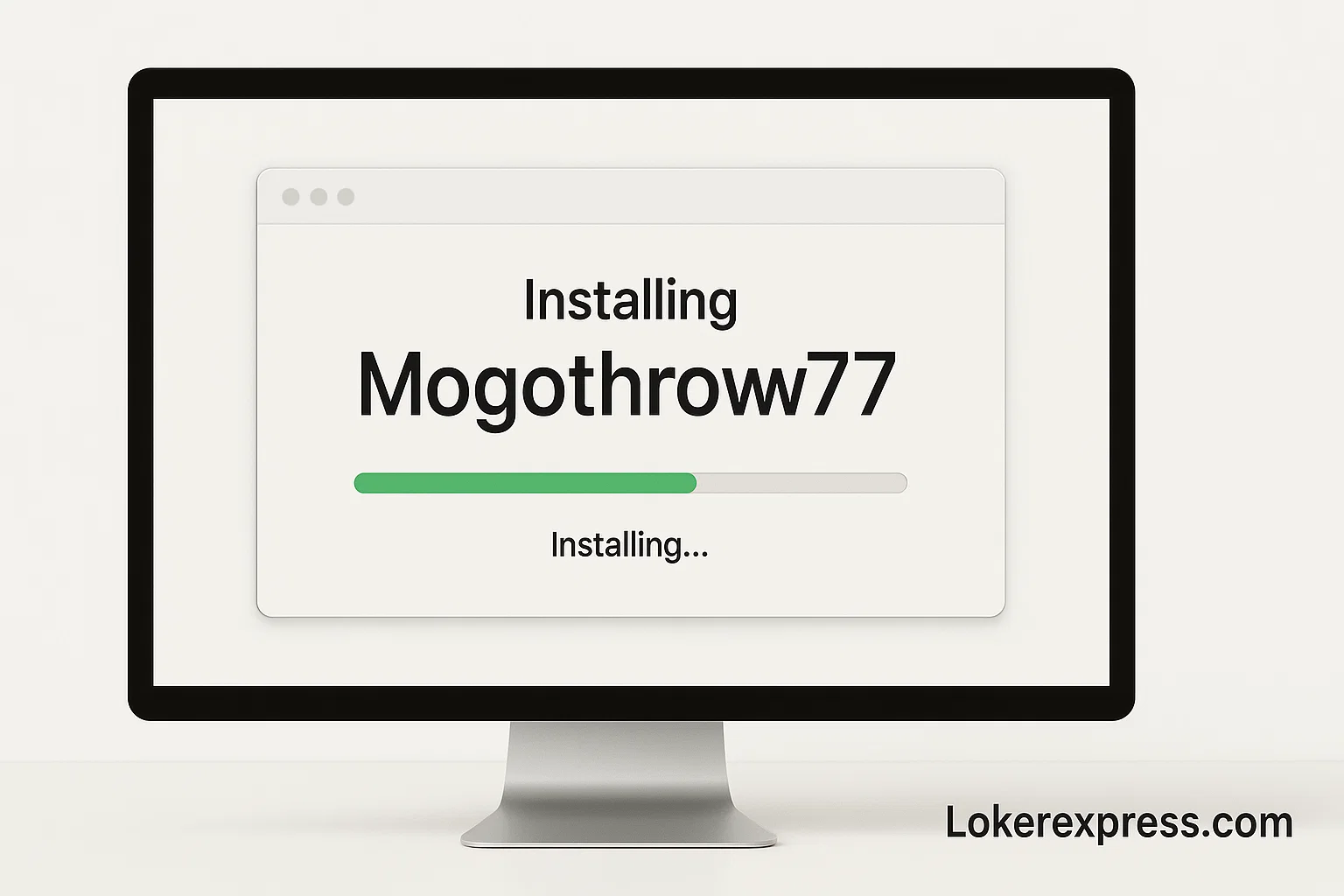Introduction: Understanding mogothrow77 Software Installation
When you’re ready to install new software, whether for personal use or a team, it’s important to get the installation right from the start. Mogothrow77 is one such software, designed to help with tasks like project management, data tracking, and team coordination. In this guide, I’ll walk you through the installation process, share some personal tips from my experience, and offer insights on how to avoid common mistakes that can cause problems later on.
Having worked on several installations of this software, I can say that with a little preparation, the process can go smoothly. Let’s get started with understanding the basics and what you’ll need to do to make sure everything is set up correctly.
Step 1: Preparing for Installation
Before you dive into installing any software, you need to make sure your system is ready. Mogothrow77 might not need a very powerful machine, but there are still some things you should check first.
System Requirements
Make sure your computer meets the minimum system requirements for Mogothrow77. For Windows, you’ll need at least 4 GB of RAM and 10 GB of available storage. For macOS, it’s similar, but you also need to ensure you have macOS 10.12 or later. These specifications are usually listed on the software’s official page. I learned the hard way that not having enough storage or outdated software can make the installation freeze or fail.
Administrative Rights
A common issue I encountered when installing software is lacking the necessary administrative permissions. Make sure you’re logged in as an administrator or that you have the correct permissions to install software. Without these, the installer may not be able to make the changes it needs to, such as updating system files or installing new components.
Step 2: Downloading the Installer
Now that you’ve prepared your system, it’s time to get the installer. This is usually a straightforward step, but it’s important to pay attention to where you’re getting the file from.
Official Sources Only
Always download the installer from the official website or trusted sources. I once made the mistake of downloading from a third-party site, and it led to unexpected errors during installation. To avoid potential issues like corrupted files or security risks, stick to the official source.
Verifying the File
Before running the installer, verify its integrity. If the software offers an option to check the file’s hash (a string of characters that ensures the file isn’t corrupted or tampered with), take advantage of it. This step may seem extra, but it can save you from wasting time on an incomplete or compromised installation.
Step 3: Running the Installer
With the installer downloaded, the next step is to actually run it. This is where things can go wrong if you’re not careful. Below are the key steps to follow during the installation process.
Launch the Installer
To start the installation, double-click the installer file. You’ll typically see a welcome screen that gives you the option to either accept the license agreement or change the install settings. I always suggest reading the agreement, but most of the time, it’s safe to accept the default options unless you need to make changes.
Selecting Install Options
Some software, like Mogothrow77, offers optional components during installation. For instance, you might be asked to install extra features or integrations with other programs like your email client or task manager. I recommend selecting the features you actually need. This keeps your installation simple and avoids unnecessary bloat. When I first installed this software, I mistakenly added several integrations I didn’t need, which slowed down the system at the beginning.
Step 4: Finalizing the Installation
Once the software begins installing, it’s mostly a waiting game. However, there are still a couple of things to keep in mind to ensure a smooth process.
Progress Bar
As the installation progresses, you’ll see a bar showing how far along it is. This usually takes a few minutes, depending on the software size and your system’s performance. During this time, don’t interrupt the process. Let the installer run its course, as canceling halfway can cause issues.
Completing Installation
After the installer finishes, you’ll typically be prompted to restart your system or launch the software directly. If you’re working in a team, this is a good time to make sure everything is working before moving on to the next phase. I’ve found that restarting your computer can sometimes help resolve any lingering issues.
Step 5: Post-Installation Configuration
Now that you’ve installed Mogothrow77, it’s time to configure the software to work the way you want. This step is crucial because it determines how the software will interact with your system and other programs.
Account Setup
After installation, you’ll need to set up your user account. This could involve creating a username, entering your license key, or connecting the software to your email or project management system. Don’t skip this step! I once missed connecting the software to our team email system and had to go back to reconfigure it, which was a time-consuming process.
Integrating Other Tools
One of the best features of Mogothrow77 is its ability to integrate with other tools you might already be using, like Slack or Google Drive. Setting these up early ensures you get the most out of the software. The integration process usually involves entering your credentials for each tool, but it’s very straightforward.
Step 6: Troubleshooting Common Installation Problems
Even with the best preparation, sometimes things don’t go as planned. Let’s look at some common problems I’ve faced and how to solve them.
Software Blocks from Antivirus or Firewall
At one point, my antivirus mistakenly flagged Mogothrow77 as a threat, blocking parts of the installation. If this happens, you can temporarily disable your antivirus or firewall and then re-enable it once the installation is complete. Just make sure to download the software from an official source to ensure it’s safe.
Missing Dependencies
If you’re installing on Linux, you might find that some dependencies (like certain libraries) aren’t installed by default. This can cause errors during the installation. To fix this, simply run the recommended commands to install any missing dependencies. Most software will provide a list or a command you can run to resolve this.
Step 7: Verifying the Installation
Once everything is set up, it’s important to make sure the installation was successful and everything is working as expected.
Test the Software
Run through the basic features of the software. Try creating a new project, sending a test email, or generating a report, depending on what features you’ll be using most. This helps you catch any issues early. If everything runs smoothly, you’re ready to start using the software for real.
Ask for Feedback
If you’re installing this software for a team, get feedback from others. Have they encountered any issues? Is everything running smoothly for them too? Sometimes others might spot problems that you missed.
Step 8: Keeping the Software Updated
The work doesn’t stop after installation. Keeping Mogothrow77 up to date is crucial for performance, security, and access to new features.
Regular Updates
Make sure the software is updated regularly to avoid bugs and security vulnerabilities. Most software updates automatically, but it’s good to check occasionally to make sure you’re not missing any critical patches. In our team, we set up a reminder to check for updates once a month.
Backup Your Data
It’s also a good idea to back up your data regularly. I recommend scheduling backups in the software settings, so you don’t have to remember to do it manually. This way, if anything goes wrong, you can restore your data quickly.
Read More: Troubleshooting Problems on LLEKOMISS Software: A Step-by-Step Guide
Conclusion: Final Thoughts on mogothrow77 Installation
Installing Mogothrow77 may seem like a complex process at first, but if you follow the steps outlined here, you’ll have a smooth and efficient experience. My personal advice is to take your time during the preparation phase, read through all the steps, and verify everything after installation.
Once everything is up and running, you’ll have a powerful tool that can streamline your workflow and improve your productivity. Happy installing!

